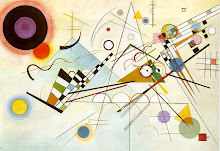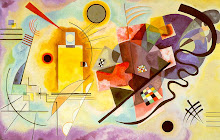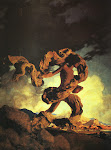The Nymph Galatea
c. 1512
Firstly, apologies for the delayed post. I'm still dealing with the results of the fire, so often enough I don't have any available time in the day. But I will try to post as consistently as possible.
Now, as for Raphael (Raffaello Sanzio da Urbino, if you're not into the whole brevity thing), I was completely surprised to find, after I had finished writing my first post of this year, headed with a painting of his, that I had never written an article on him. What an oversight! And just now, as I think of setting some examples against Raphael, I realize I haven't written about Michelangelo, who was both an example for and a rival of his. And, frankly, there is little to say of Raphael's art that has not been said and echoed a hundred times. I will try to write a bit, but forgive my repetitiveness.
Raphael was a very dynamic painter, taking into himself the influences of the art world around him; and, since he travelled often, it made for a wide array of influences. For example, Raphael freely took into his process the technical interpretations of da Vinci, his smokey transitions (sfumato), and of Michelangelo, his dramatic color changes (cangiante). But what made Raphael interesting was not the constant evolution in his style, but the constant stroke of excellency at the heart of his work. And I will venture to write that this excellency came from Raphael's peculiar meticulousness, which, unlike da Vinci's perfectionism, did not cause a loss of soul in the appearance of the subjects (I'm sure many will disagree with that comparison).
What do you think, readership?
Portrait of Bindo Altoviti
1514
Poetry
1508-1511
St. Catherine of Alexandria
1508
The Coronation of the Virgin
c. 1503
Portrait of Julius II
1511-1512
Philosophy
1508-1511
.jpg)
.jpg)
.jpg)
.jpg)
.jpg)
.jpg)
.jpg)







No comments:
Post a Comment